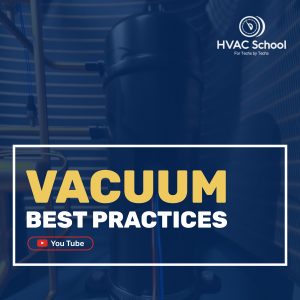BACK
 Best Practices to Conserve A2L Refrigerants in a Shortage
Best Practices to Conserve A2L Refrigerants in a Shortage
 Valve Core Removal Tools
Valve Core Removal Tools
 Which Hose Do I Use?
Which Hose Do I Use?
 Two Tips for Tough Vacuum Jobs
Two Tips for Tough Vacuum Jobs
 5 Install Mistakes that Kill Systems
5 Install Mistakes that Kill Systems
 Can Pulling a Vacuum too Fast Freeze Water/Moisture?
Can Pulling a Vacuum too Fast Freeze Water/Moisture?
 Testing the Leak Rate on Your Micron Gauge Itself
Testing the Leak Rate on Your Micron Gauge Itself
 Testing the Leak Rate on Your Micron Gauge Itself
Testing the Leak Rate on Your Micron Gauge Itself
 How Long Should I Evacuate a System?
How Long Should I Evacuate a System?
 How to Evacuate an AC system, Full Vacuum Procedure
How to Evacuate an AC system, Full Vacuum Procedure
 Testing the Leak Rate on Your Micron Gauge Itself
Testing the Leak Rate on Your Micron Gauge Itself
 Roman SpeakPipe VRF – Short #235
Roman SpeakPipe VRF – Short #235
 Q&A – Vacuum Questions Answered
Q&A – Vacuum Questions Answered
 Vacuum and Recovery in an A2L World with Jesse Stewart
Vacuum and Recovery in an A2L World with Jesse Stewart
 Evacuation 101 w/ Jim Bergmann (Podcast)
Evacuation 101 w/ Jim Bergmann (Podcast)
 Evacuation, Recovery, and Dehydration Facts Podcast
Evacuation, Recovery, and Dehydration Facts Podcast
 Understanding Effects of A2L Refrigerants on Tools, Recovery, and Evacuation
Understanding Effects of A2L Refrigerants on Tools, Recovery, and Evacuation
#evacuation
Tech Tips:

If you own your HVAC company or are involved in management, you may have realized that our industry is currently facing a shortage of new A2L refrigerants, particularly R-454B and R-32. Our own company has faced limited availability and long lead times, mainly due to supply chain disruptions and the increased demand now that our […]
Read more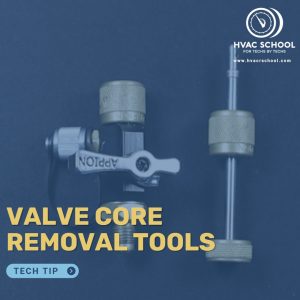
Valve core removal tools were originally developed to remove damaged valve cores without the need to pump the system down. This technology was a major leap forward in work efficiency, as pumping down a system can be a tedious and time-consuming task. Eventually, technicians discovered that removing valve cores led to faster evacuation, recovery, and […]
Read more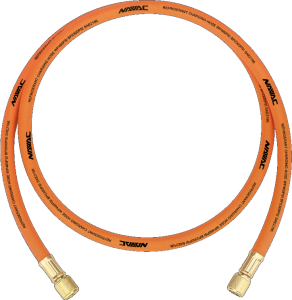
This tech tip is a companion piece to a recent short podcast episode about the same topic. It contains links to the specific products mentioned in that podcast. You can also learn more about NAVAC products as a whole at https://navacglobal.com/. Our trade has a lot of cool tools. But while we’re thinking about how […]
Read more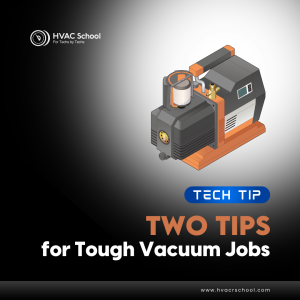
In the last year or so, I have had a couple of puzzling experiences related to pulling a vacuum. These instances have left me with questions and clues where I thought I had given up on understanding a certain vacuum situation. Typically, if I’ve had a hard time achieving a proper vacuum, I would be […]
Read more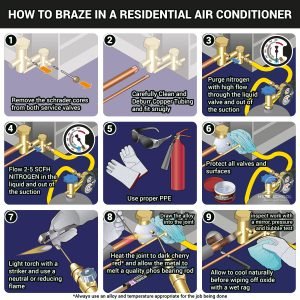
When we install systems, we should have three main goals in mind: maximizing longevity, efficiency, and capacity. We want our units to work as long as possible, use the lowest amount of energy, and move the greatest amount of BTUs possible with a proper mix of sensible and latent heat transfer. Unfortunately, some installation practices […]
Read more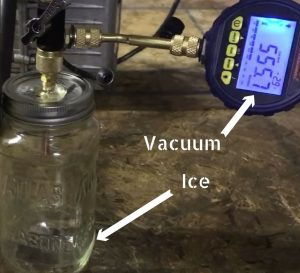
First, I want to give credit where credit is due. This post is made possible by the fantastic demonstration video by Neil Comparetto that I embedded below. Before you get bored and stop reading, I want to get the conclusion out in the air. Ice can form in a vacuum, but I still advise pulling a […]
Read more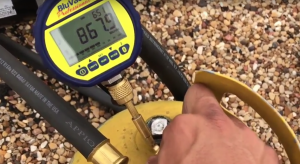
As a technician gains skill, they will learn that regularly testing your tools is a huge part of success. It isn't long in the field before techs find out that just because a meter or gauge gives a particular reading, it doesn't ALWAYS mean it is correct. Vacuum is one of these areas. Everything in […]
Read more
As a technician gains skill they will learn that regularly testing your tools is a huge part of success. It isn't long in the field before techs find out that just because a meter or gauge gives a particular reading it doesn't ALWAYS mean it is correct. Vacuum is one of these areas. Everything in an […]
Read more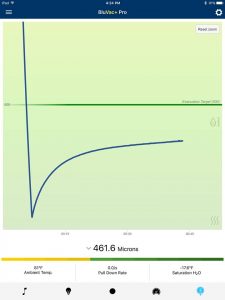
This article was written by Jim Bergmann with MeasureQuick. Anyone who has ever picked up a vacuum pump has asked or been asked this question. To be truthful, it is like asking, “How many licks will it take to get to the center of a Tootsie Roll Tootsie Pop?” In the words of the wise […]
Read moreVideos:

In this first video Bryan goes deep into how to evacuate or “vacuum” an air conditioner in a video collaboration with Paul from The Engineering Mindset channel. We also wrote an article on evacuation for the ACHR NEWS that you can find HERE Article on proper micron gauge placement HERE Can you freeze water in […]
Read more
As a technician gains skill they will learn that regularly testing your tools is a huge part of success. It isn't long in the field before techs find out that just because a meter or gauge gives a particular reading it doesn't ALWAYS mean it is correct. Vacuum is one of these areas. Everything in an […]
Read morePodcasts:

In this short podcast episode, Roman Baugh takes over the HVAC School podcast to answer a listener-submitted question about VRF (or VRV) system evacuation. Evacuation is a critical step of making repairs on VRF systems, which are very diverse and versatile but require a high level of understanding. VRF systems have multiple indoor units […]
Read more
In this episode of the HVAC School podcast, host Bryan dives deep into the topic of vacuum in HVAC and refrigeration systems. He addresses two questions from social media about vacuum, expanding them into a comprehensive discussion of best practices, common issues, and techniques for effective vacuum procedures. Bryan starts by explaining where to […]
Read more
In this podcast, Bryan Orr interviews Jesse Stewart from NAVAC about A2L refrigerants and compatible tools and safety procedures. They discuss how NAVAC has a full line of A2L-compatible tools for evacuation and recovery, including the new NR7 and upgraded models of the NRDDF and NRDD. Jesse explains key features that make tools A2L […]
Read more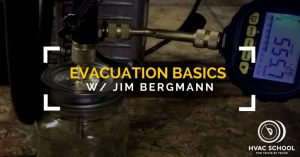
In this episode of the podcast, Jim reviews the basics of evacuation and dehydration. He also covers hoses and vacuum gauge placement. Evacuation may just seem like a method to suck air and water out of a system. However, it is an intricate science that lacks a lot of detail in most trades education programs. […]
Read more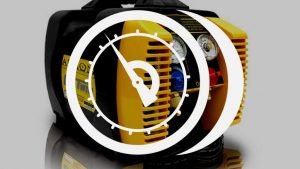
In this episode, Bryan covers evacuation, recovery, and dehydration. Evacuation refers to putting a vacuum pump on the system and pulling it down. We use a few different measures of vacuum, including inches of mercury (“Hg) or microns (millionths of a meter of mercury). We use such small units to measure a vacuum that effectively […]
Read moreEvents:
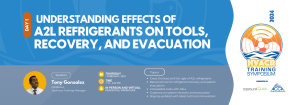
NOTE: If you cannot view the recording, the video may still be processing. The maximum wait time is 24 hours. We apologize for the delay and appreciate your patience.
Read more

